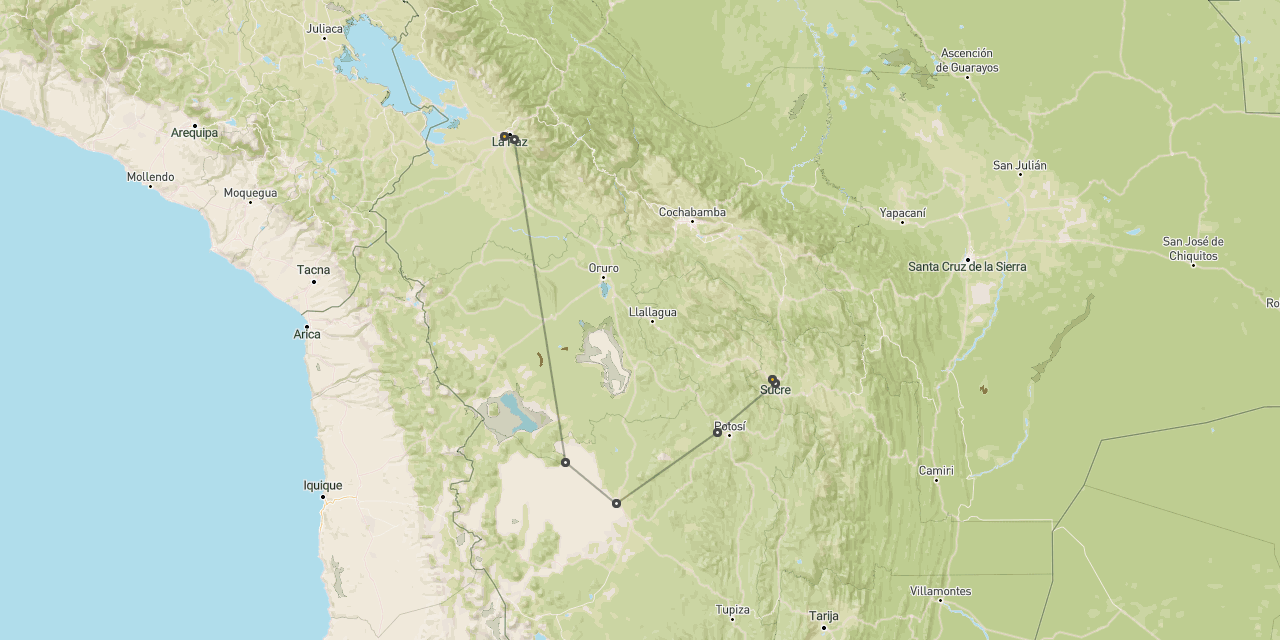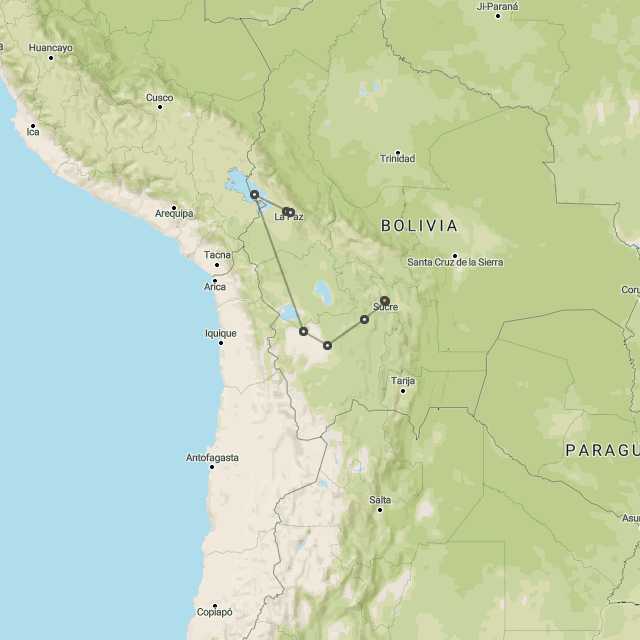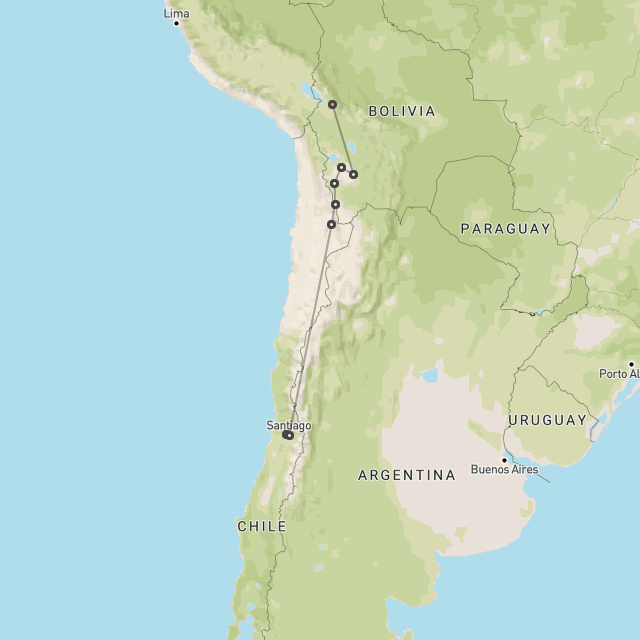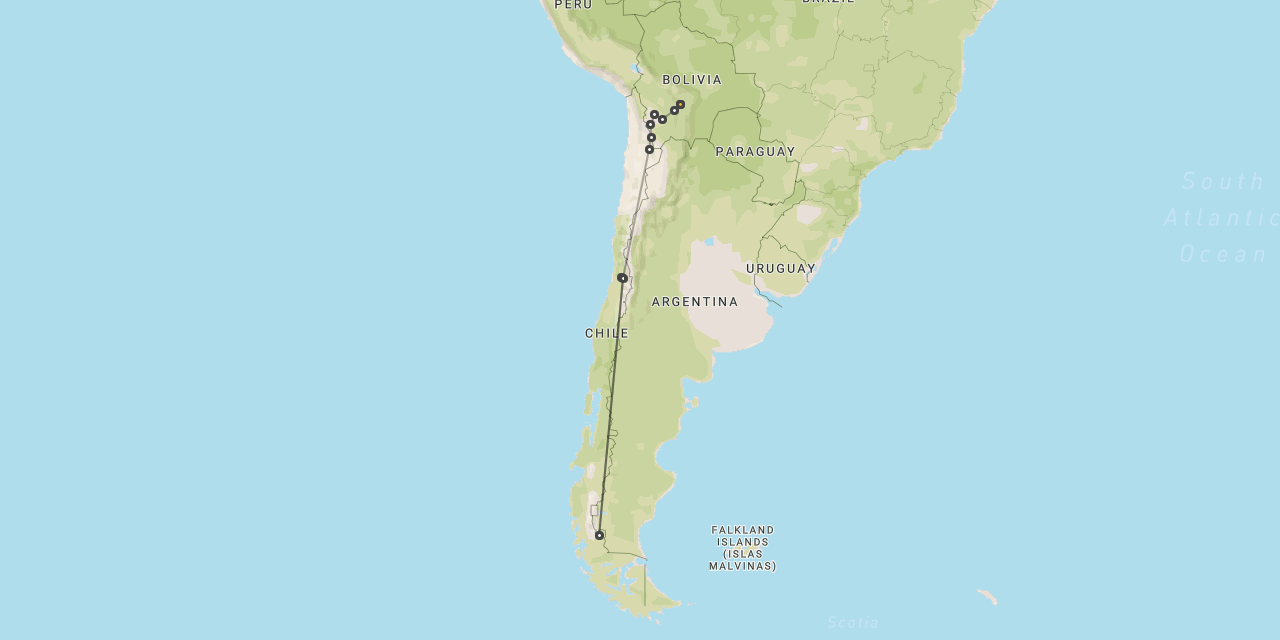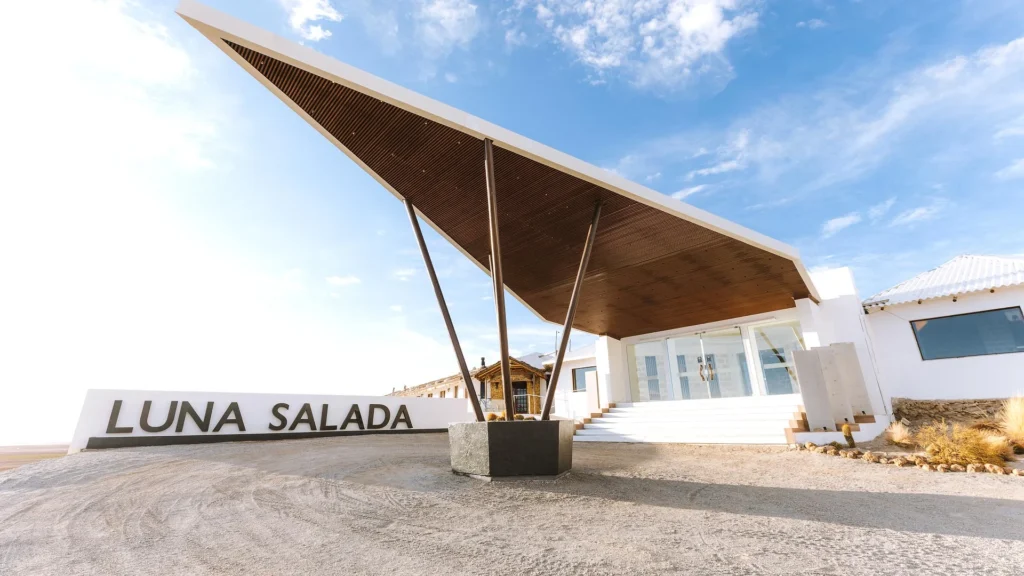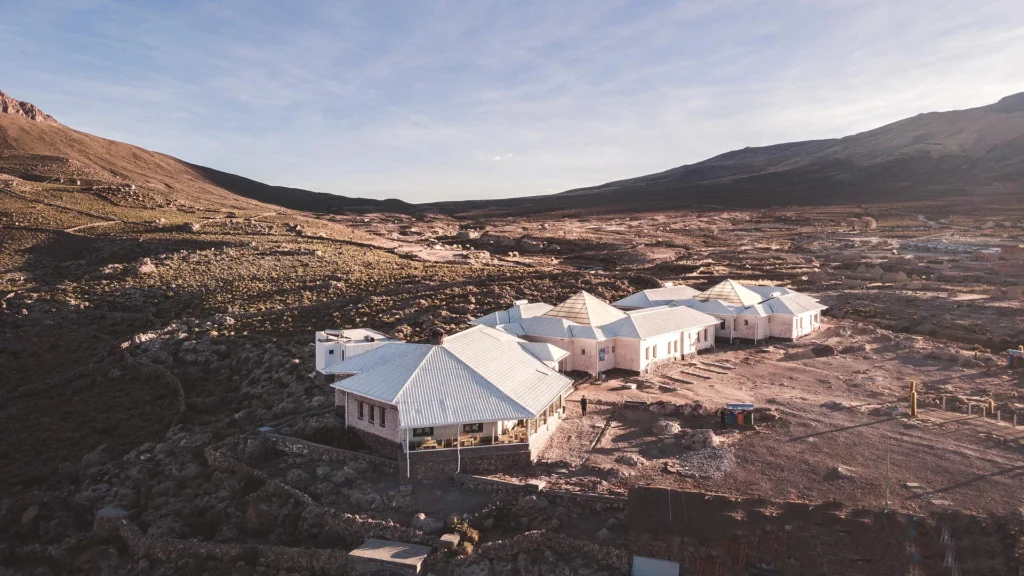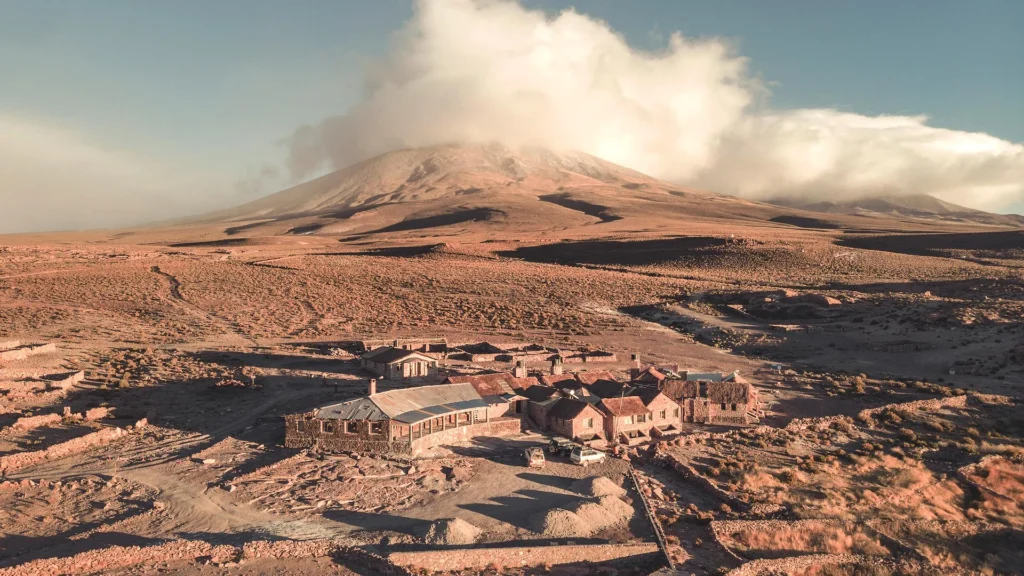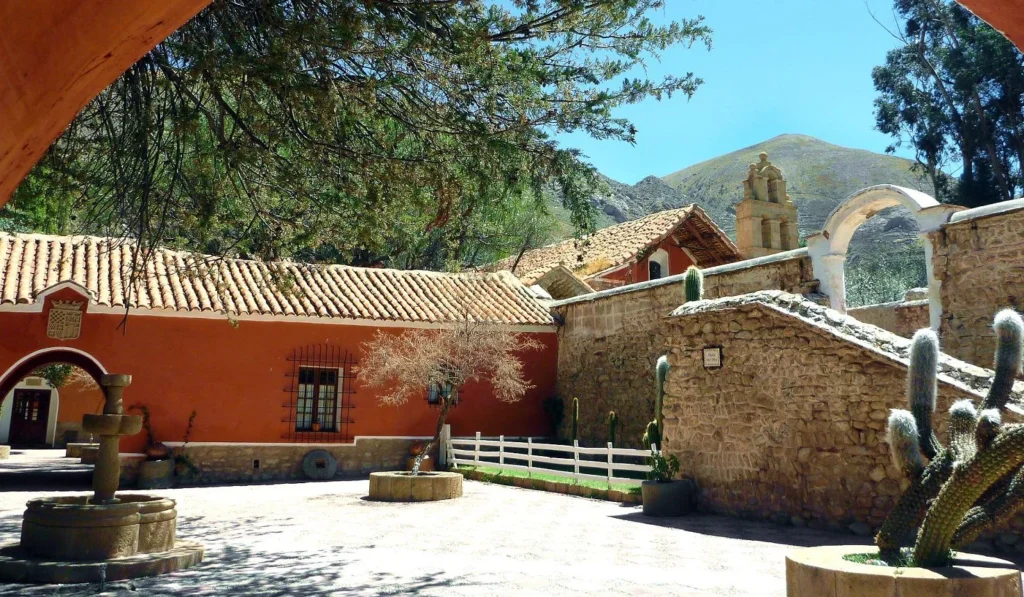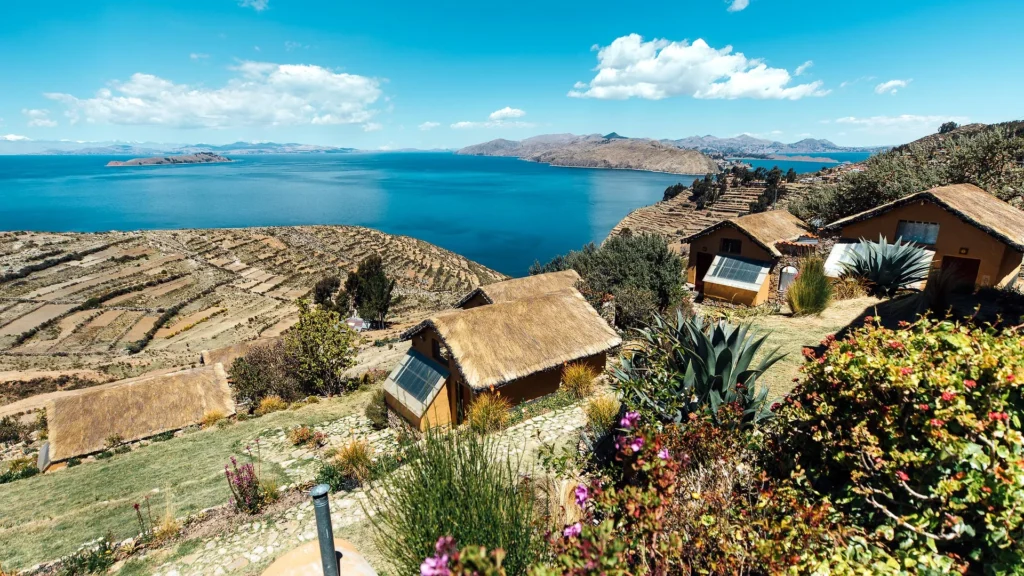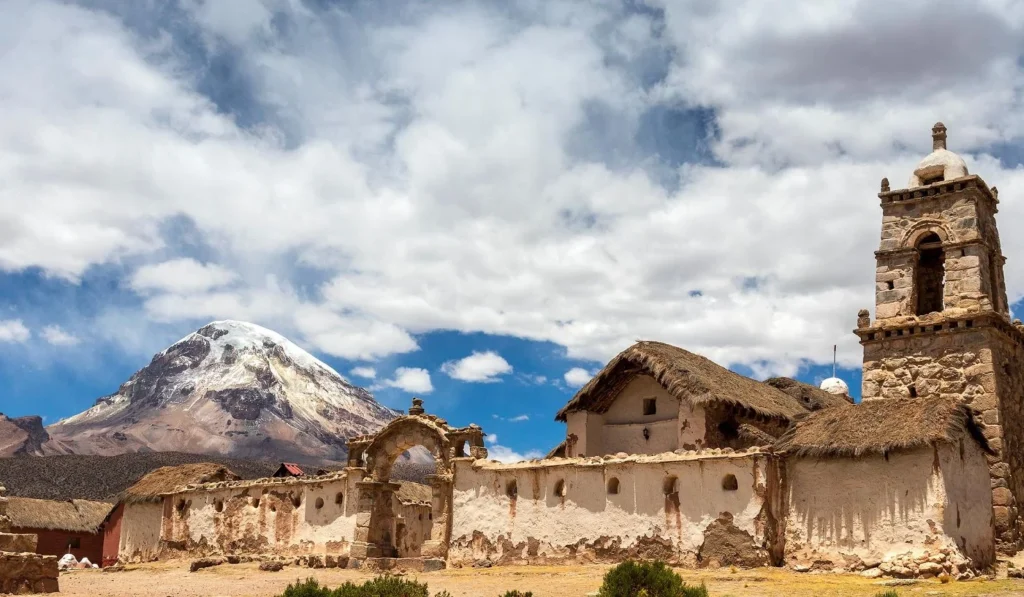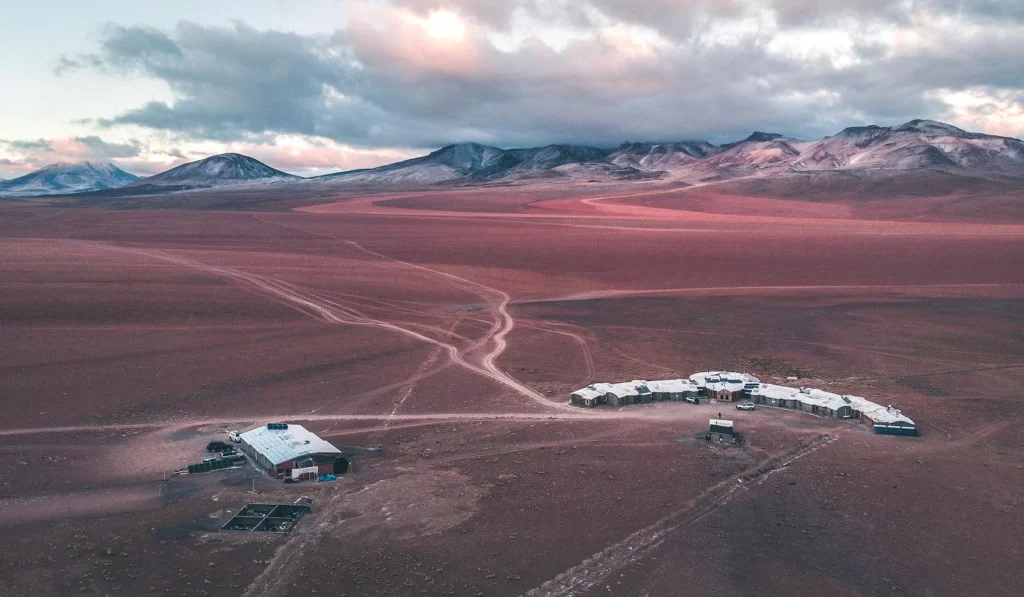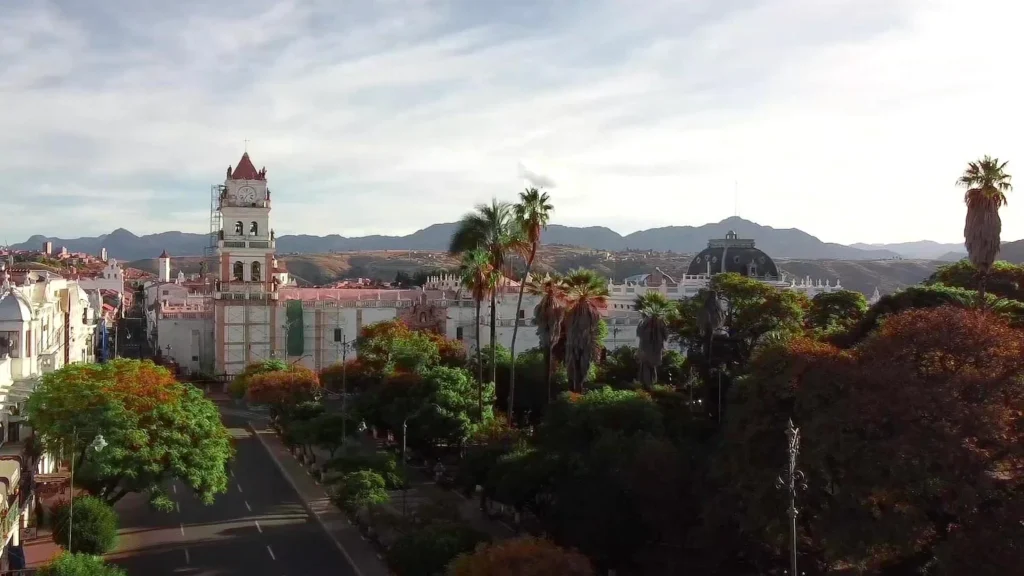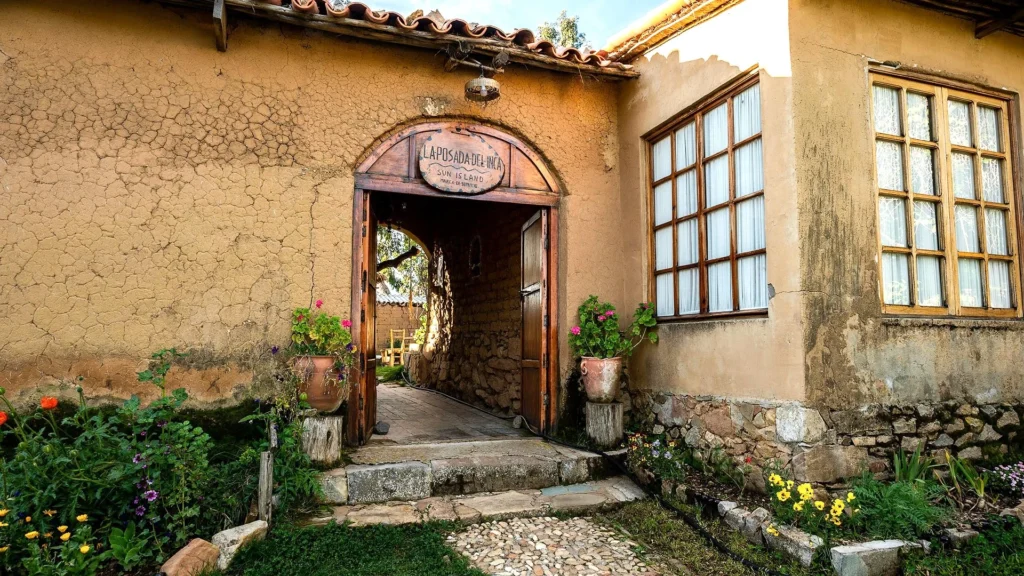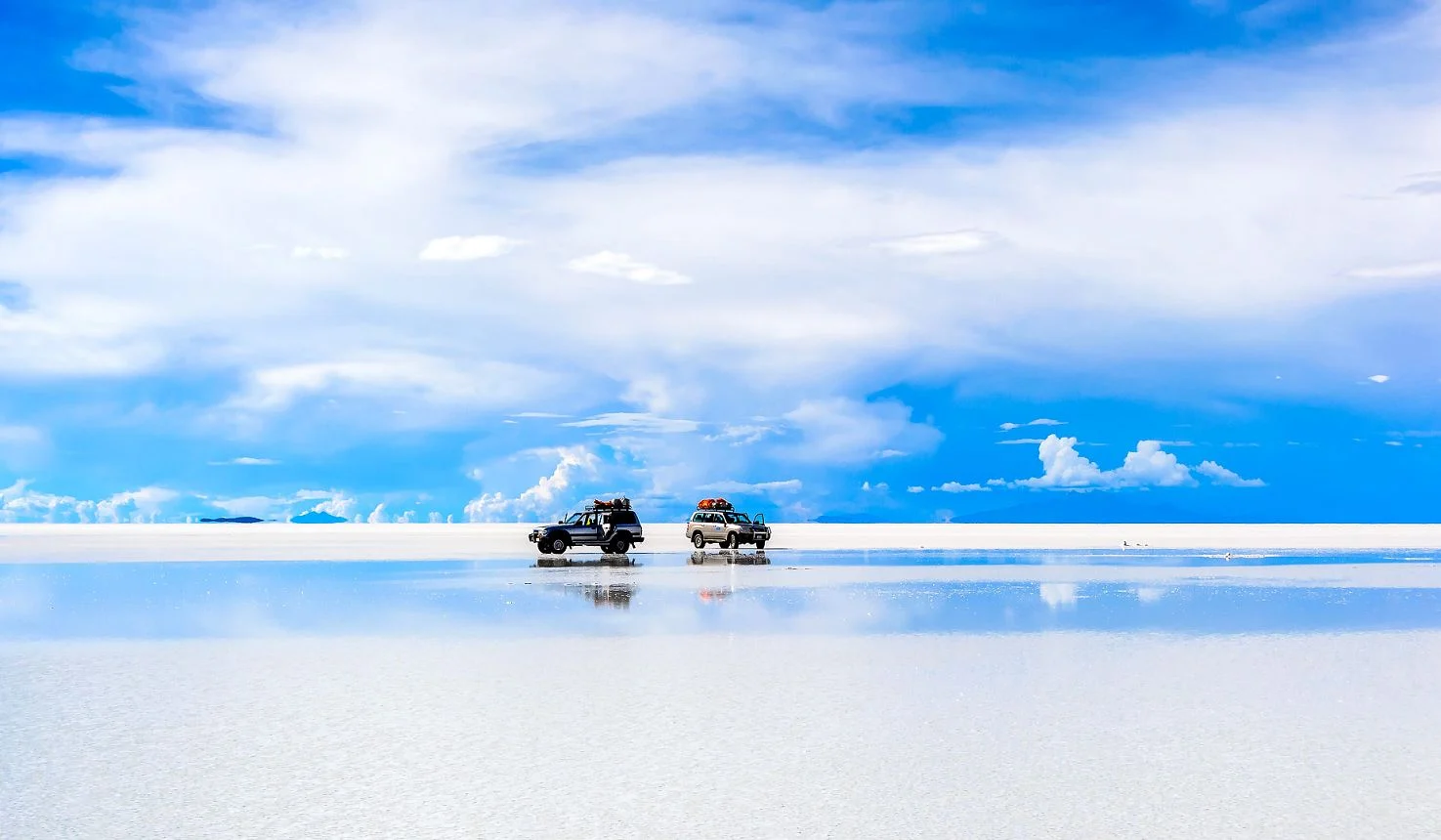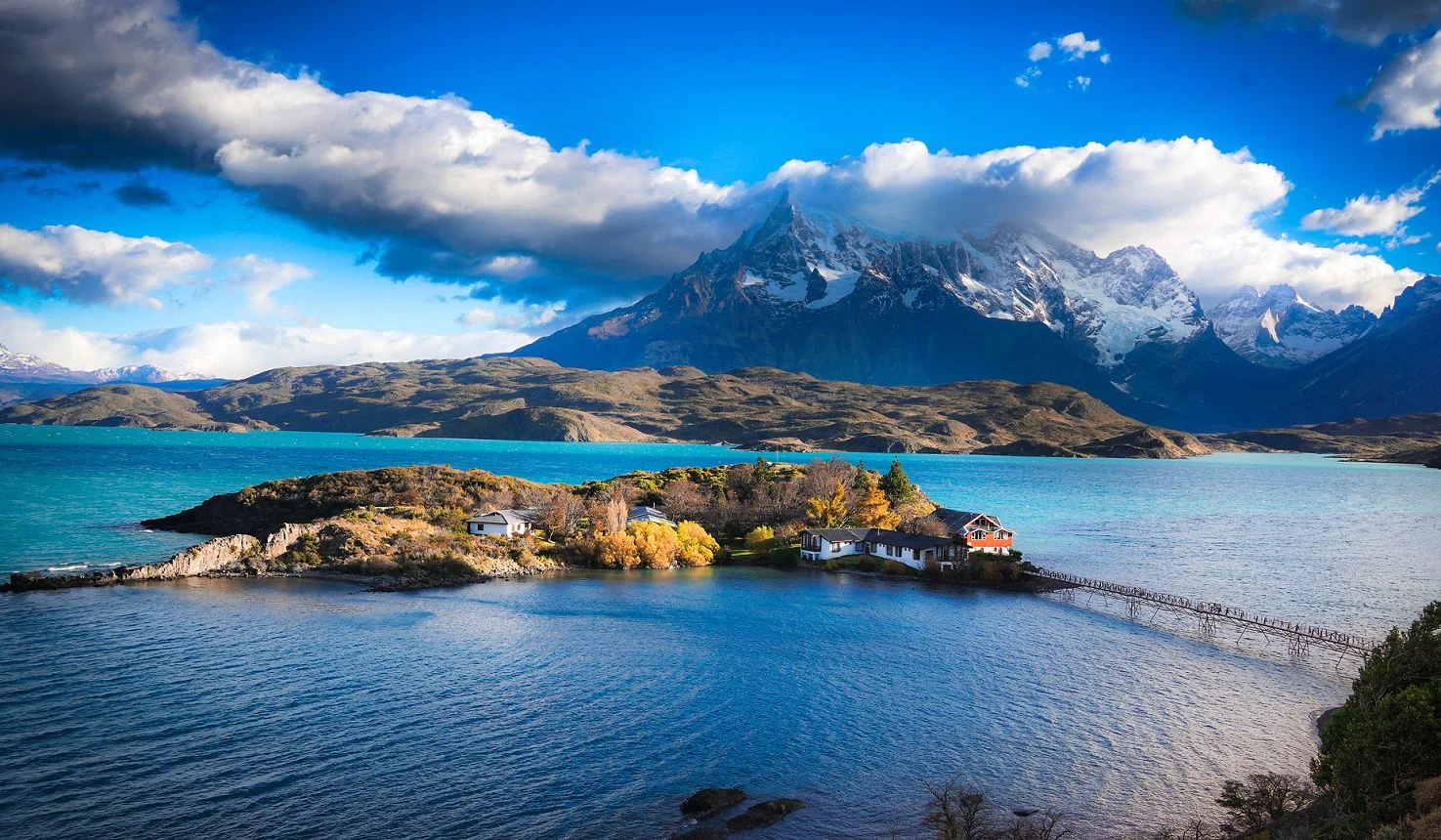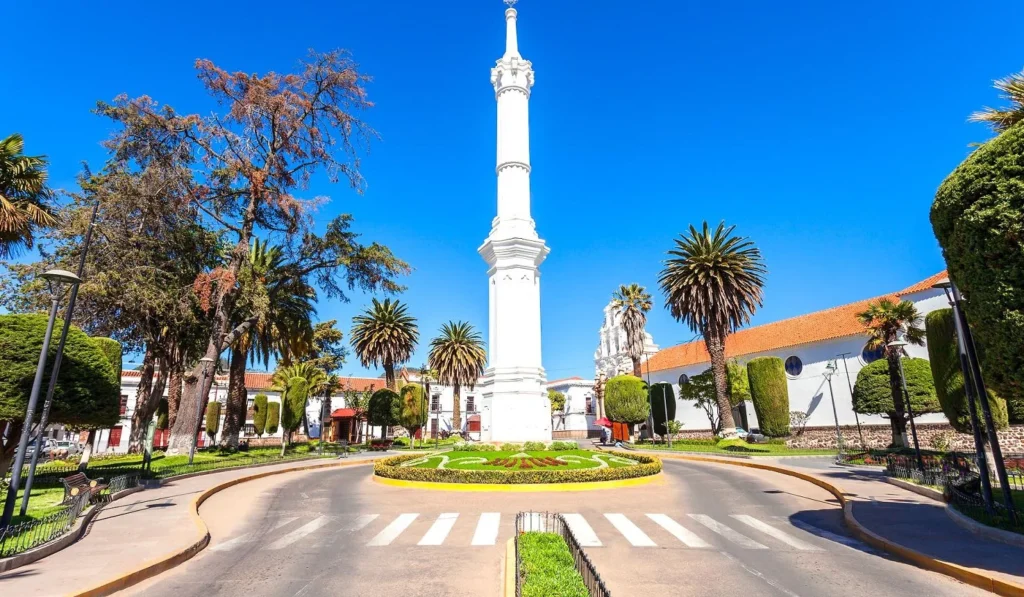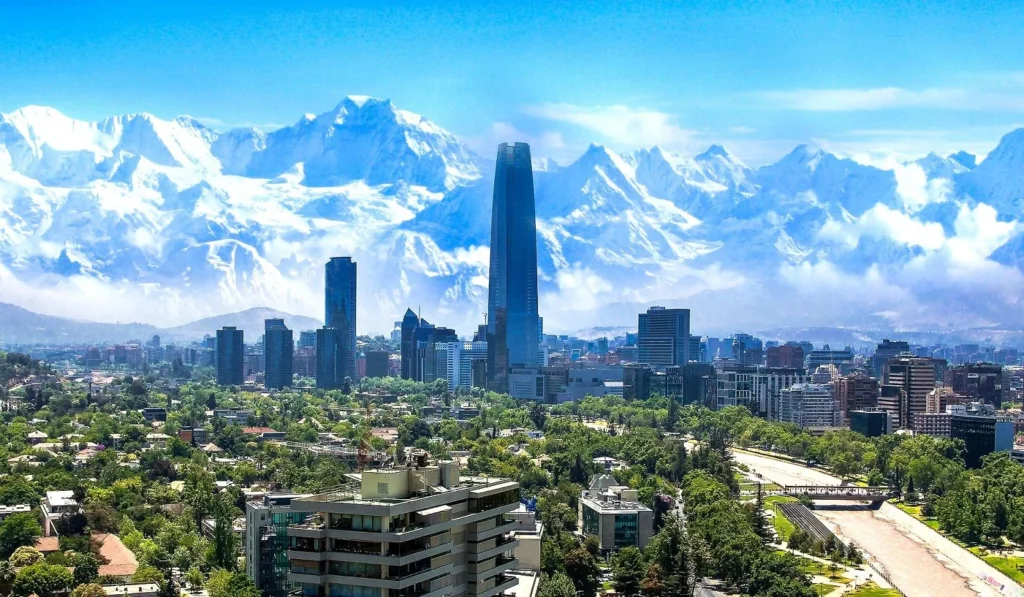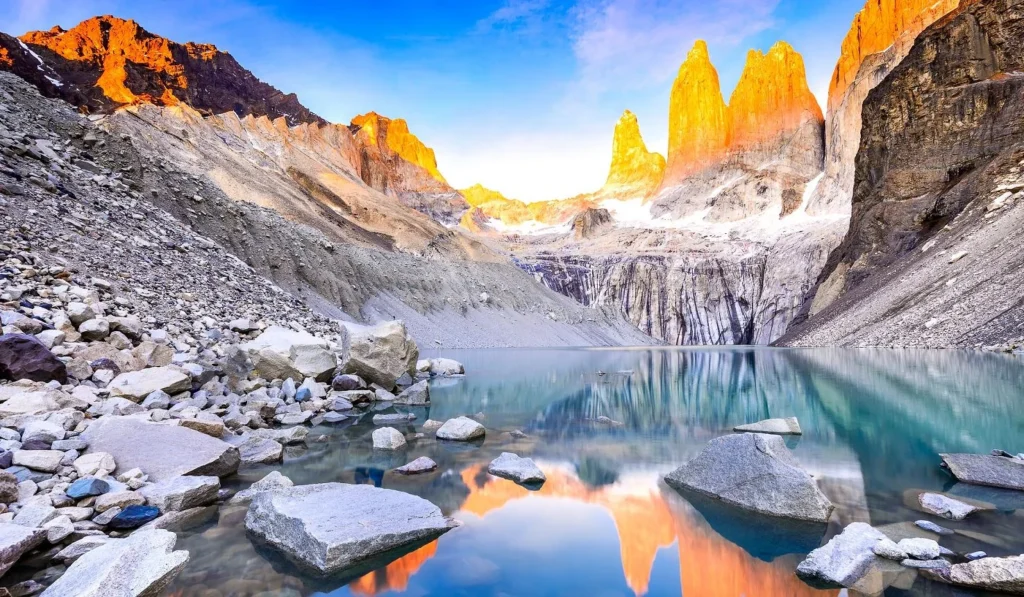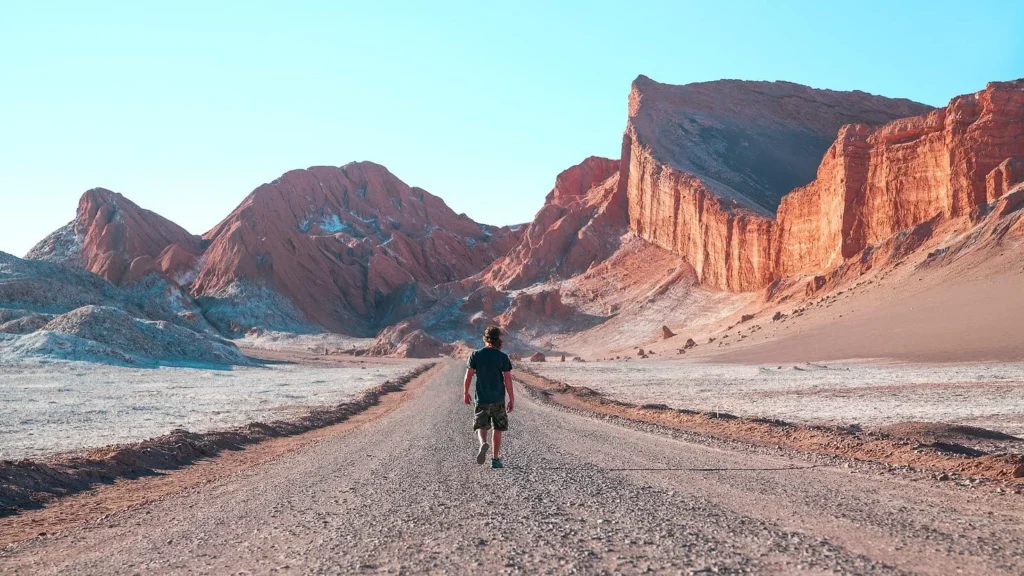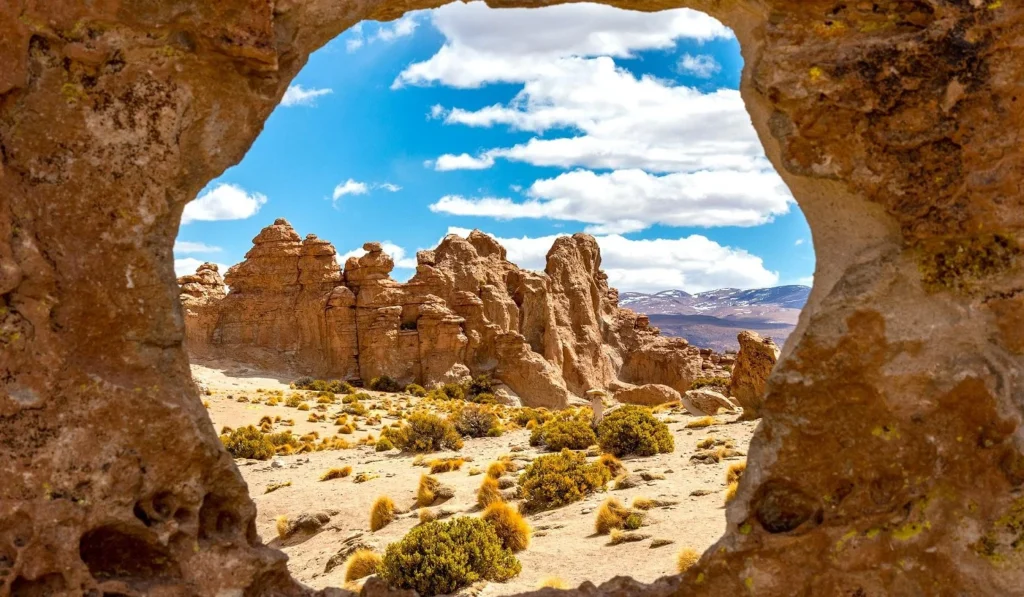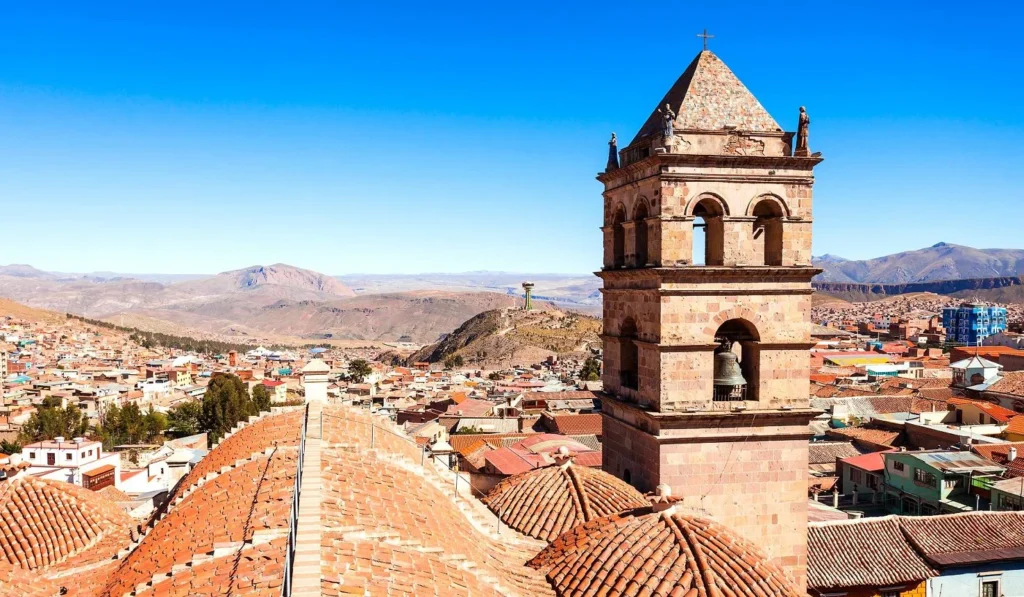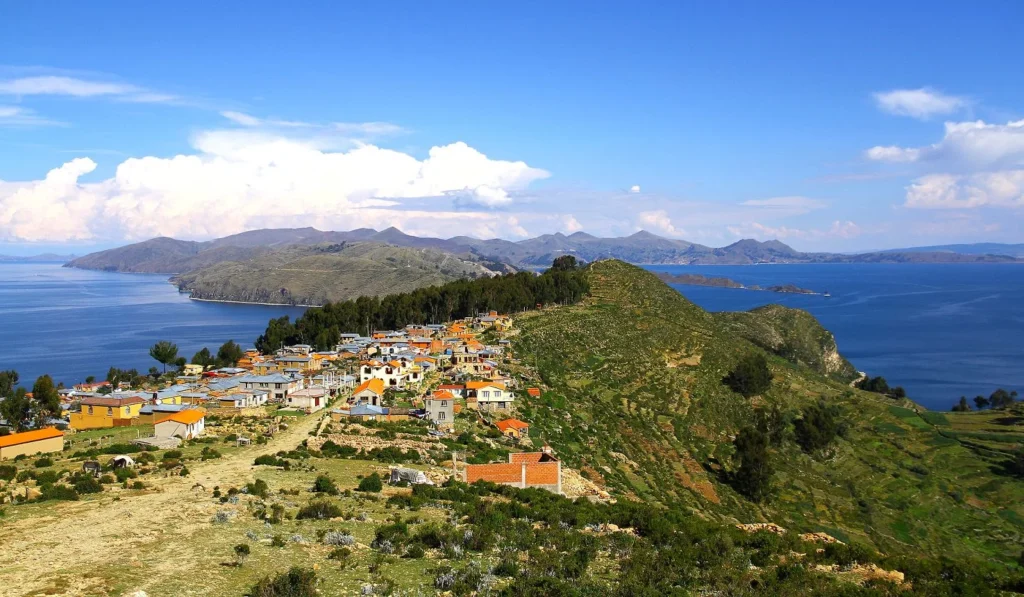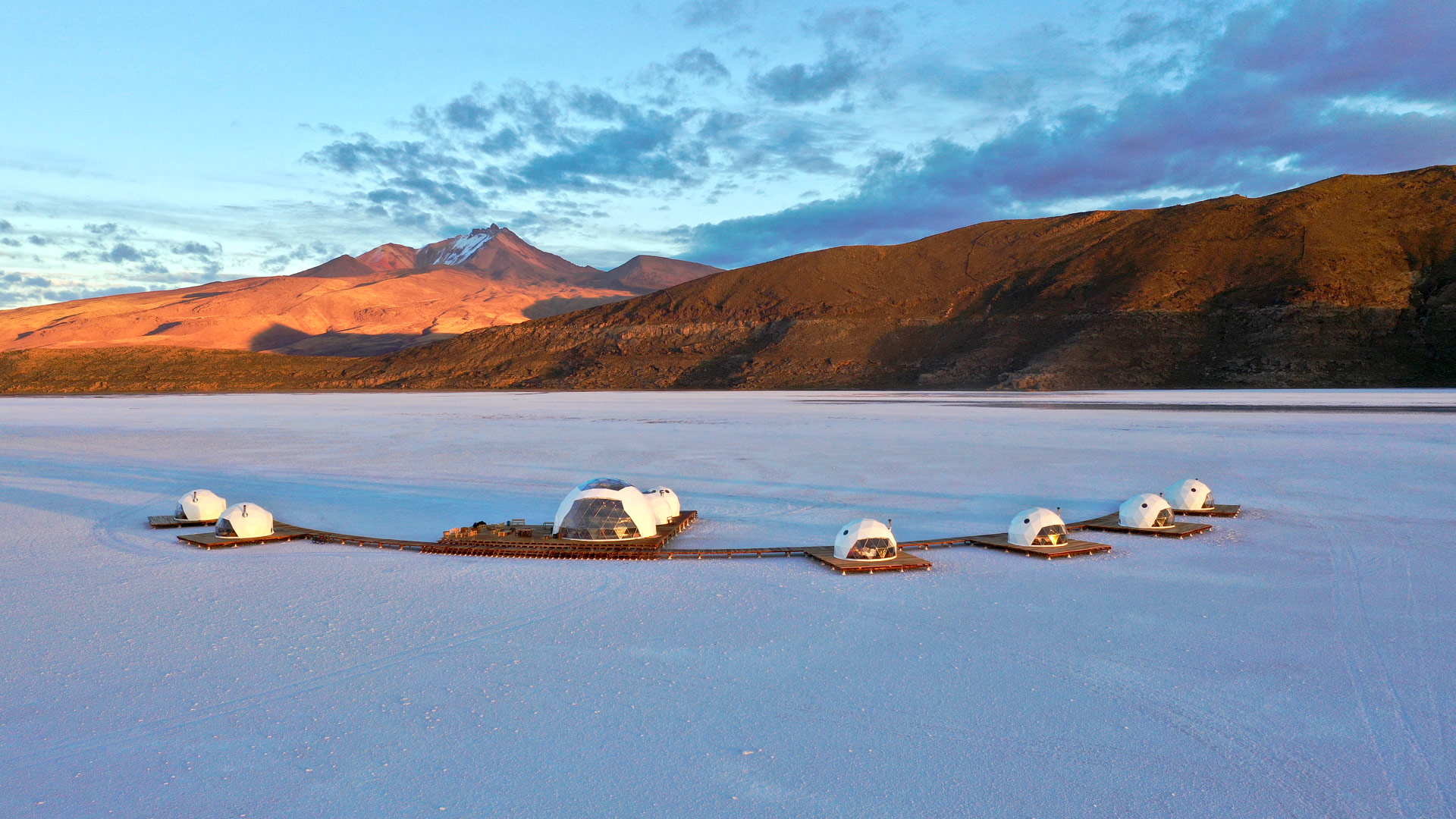
Kachi Lodge
Kachi Lodge
is an upmarket property
on the vast Salar de Uyuni
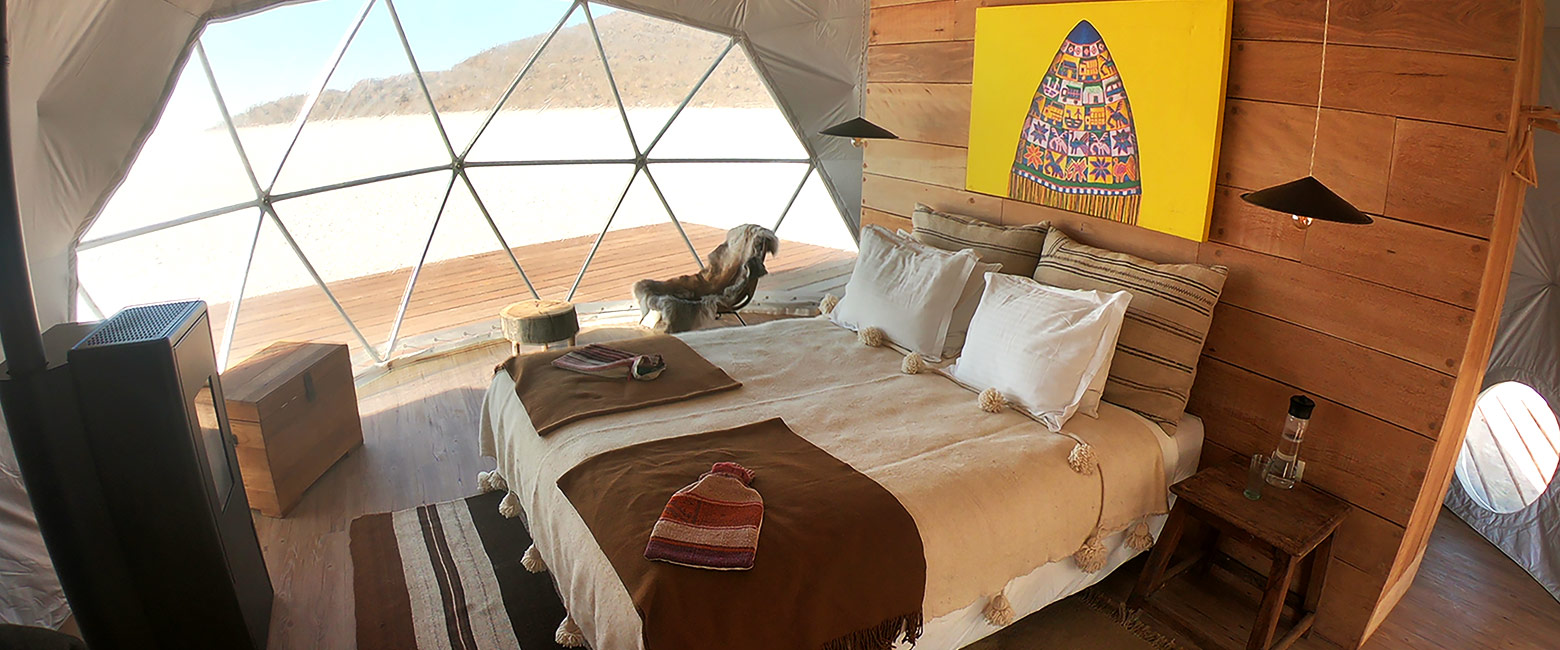
permanently closed since 2023
Set on the pleasantly quiet and remote north side of the Salar de Uyuni, Kachi Lodge is a gorgeous, intimate and high-end property.
The lodge is set close to a typical cactus-covered island, around 1 km from the northern shoreline of the great salt pan, a few kilometres from the small village of Jirira and in the shadow of the great mother volcano Cerro Tunupa.
Raised up on low boardwalks above the surface of the salt, the lodge consists of a large central geodesic dome, with two smaller domes to the rear containing the kitchen and other services spaces.
This main dome contains gorgeous lounge and dining areas, looking out over the pan through a vast transparent wall. There’s also a broad terrace and outside dining area to one side.
The interiors of the lodge were created by renowned Swiss designers Marina Cardis and Marine Luginbuehl.
A major feature of the lodge are the various artworks on display, most of which are the creations of legendary local artist Gastón Ugalde (widely known as ‘the Bolivian Andy Warhol’), who has been operational in this area for decades and who can lead you (by prior arrangement) on remarkable art and photography master classes.
Rooms
Guest accommodation is in just 6 gorgeous geodesic domed rooms, which are arranged along a gently arcing boardwalk, four to the east of the main dome, two to the west.
These rooms are all 28sqm (300 sq ft) and have a diameter of 6 metres (18’).
Each room can sleep three guests, with either one large bed or two smaller beds, plus a smaller bed (best suited for a child), with a private bathroom and a log-burning stove for the cold nights.
Activities
Kachi Lodge provides access to a range of unusual activities, including explorations of the great salt pan and its associated commercial salt works and expeditions through the hinterland, where there are caves with ancient burial sites, indigenous villages and opportunities for cultural interaction and hiking.

Gallery
Map
We most commonly include the Salar de Uyuni as part of a private guided overland safari between La Paz in Bolivia and San Pedro de Atacama in Chile.
The usual stay duration at Kachi Lodge is three nights.
Seasonality
The best time to visit Salar de Uyuni is a little complicated, but let’s start by discussing the weather …
Salar de Uyuni has a cold desert climate, similar to that of other locations in the Atacama (San Pedro, Eduardo Avaroa, Sajama and Lauca), but with slightly more rain along the eastern fringes during Dec-Mar.
There are three clearly defined seasons …
Winter
During the May-Sep winter the weather is usually cold and very dry. Average daytime temperatures usually manage to reach around 14C/57F, with nighttime lows plunging to around -11C/12F, with regular frosts and snow cover at altitude. Average sunshine remains high at around 8 hours per day.
Since there is virtually no rainfall throughout the period, the pans surface is encrusted and can be driven across, so all areas are accessible.
The Jul-Aug period is peak season for visitors, so it’s best to avoid that if you can.
Early summer
During the Oct-Dec summer conditions are usually relatively warm and very dry, with lots of sunshine. Average daytime temperatures usually reach around 20C/68F, with nighttime lows holding up around -3C/27F. Average sunshine is up around 8-9 hours per day (around 75% of daylight hours.
With rainfall rising slightly through the period to around 25mm (1”) per month, the crust of the pan usually starts to soften through this period, but most areas usually remain accessible.
The late December period is peak season for visitors, so it’s best to avoid that if you can.
Late summer
During the Jan-Apr summer conditions are usually relatively warm and very dry, with lots of sunshine. Average daytime temperatures usually reach around 19C/66F, with nighttime lows holding up around 1C/34F. With more overcast skies, average sunshine drops to around 7-8 hours per day (55% of daylight hours).
With rainfall rising to around 75mm (3”) per month in Dec-Mar, possibly accompanied by floodwater arriving from Lago Titicaca, the salt flats (or at least a portion of them) are likely to pool into a shallow lake, creating the famous mirror effect that so commonly features in images of the area. But with the salt crust becoming soft, it’s often not possible to access large parts of the pan and in the Potosi area it becomes illegal to go further than 15km from the shoreline.
The first week in January continues to be peak season for visitors, so it’s best to avoid that if you can.
Getting there
When undertaking an overland safari out of La Paz, we optionally first route south to the Sajama and Lauca areas for wildlife viewing and Aymara culture, before heading down to Salar de Uyuni. From there we continue south, down through Eduardo Avaloa, then crossing into Chile to end at San Pedro de Atacama, flying on to Santiago.
Instead of heading south from Salar de Uyuni, it’s also possible to head east to the famous mining town of Potosi and on to the relaxed old capital of Salta, from where you can fly back to La Paz.
It’s also possible to fly from La Paz directly to Salar de Uyuni. This tends to be most commonly done when adding the area onto a Peru trip, arriving either by air from Cuzco or by road from Lago Titicaca.
usually part of a private-guided overland safari
let us know your thoughts about Bolivia
and we will help you create the perfect safari

Extraordinary tailor-made adventures,
from earthy and edgy to easy and extravagant
From around USD 2500 per person, you set the ceiling
Sample Trips
Here are some of our popular trip shapes
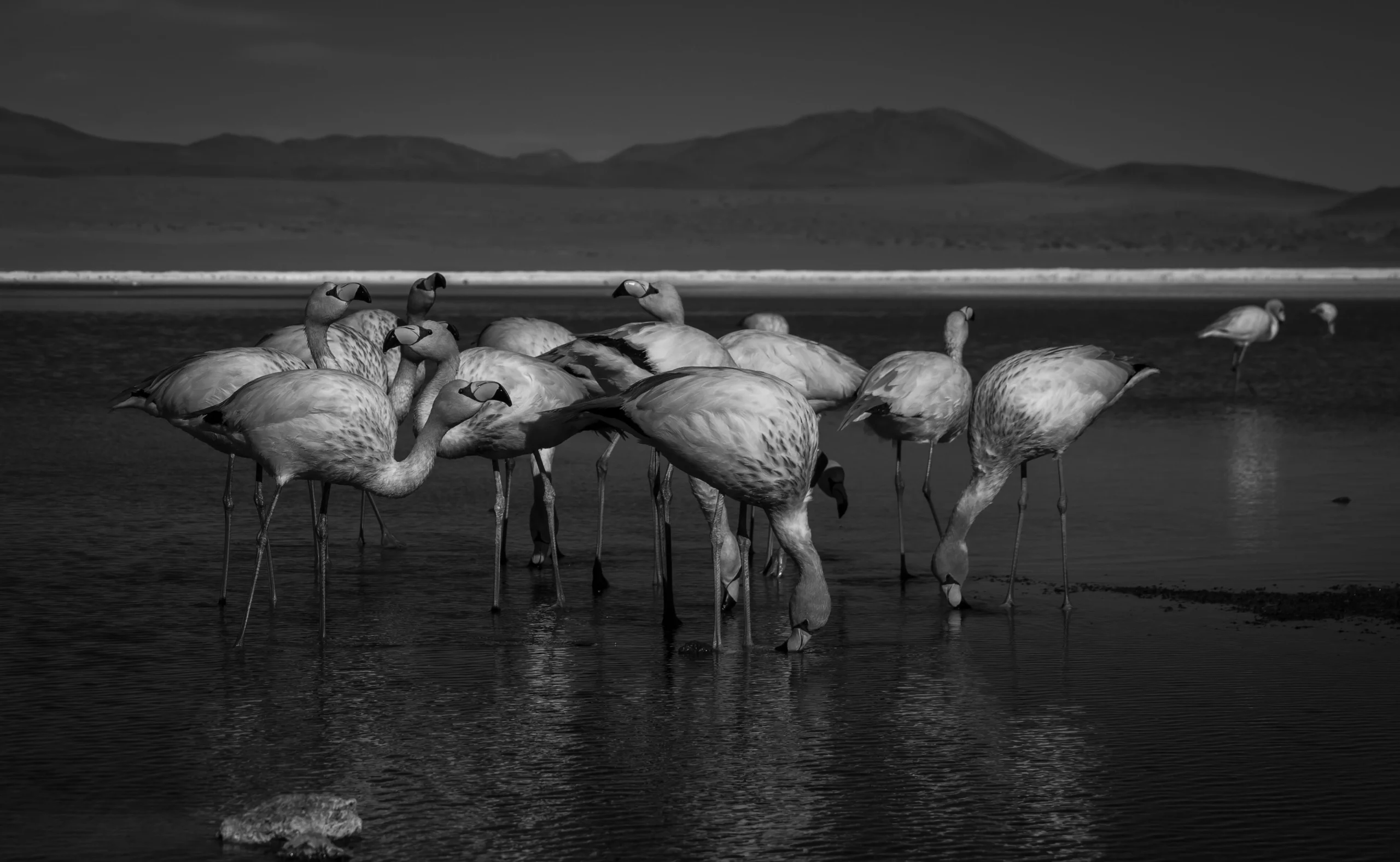
Get started on your trip
It’s never too soon to get in touch, we are here to help with every stage of your planning.
Best Lodges
We regularly inspect and photograph all of the the best lodges, to ensure that we always recommend the most suitable options
Key Locations
Take a look around related locations. Click ‘View more’ to explore locations further afield.
Where Next?
Where Next?
We offer trips to dozens of fabulous countries.
Might one of these might be your next great adventure?

Please rotate your screen.















